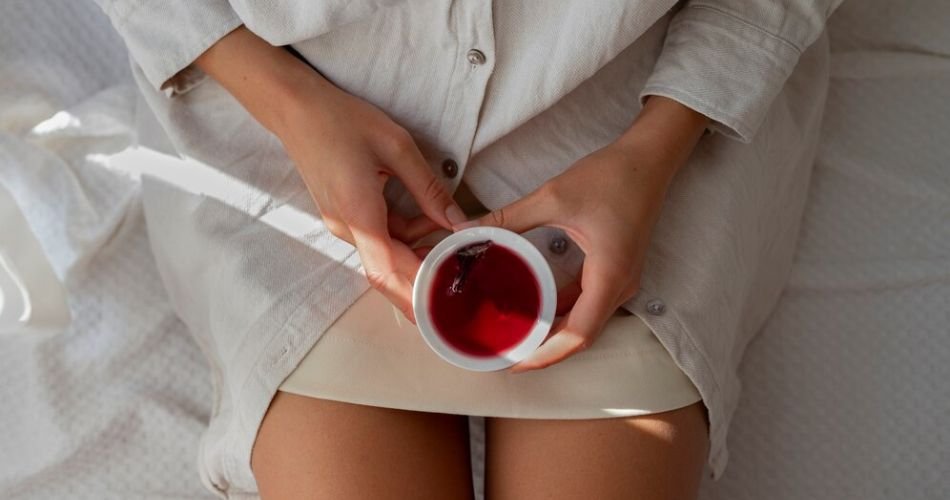Rash from period pad is a common yet often overlooked issue that many people experience during menstruation. This uncomfortable condition can cause itching, redness, and irritation in the sensitive skin around the vaginal and thigh areas. It usually results from prolonged pad use, friction, or allergic reactions to materials used in sanitary products. Despite being a frequent concern, it’s rarely talked about openly, leading many to suffer in silence. Understanding what causes these rashes and how to prevent them can make your period a lot more manageable. In this article, we’ll explore the causes, symptoms, and best remedies for dealing with pad rashes.
What Is a Rash From Period Pad?
A rash from period pad is a type of skin irritation that occurs in the genital or inner thigh area during menstruation due to prolonged contact with a sanitary pad. It often results from friction, moisture buildup, or sensitivity to the materials used in the pad. Common symptoms include redness, itching, burning, or a sore, inflamed feeling in the affected area. In some cases, the rash may lead to broken or blistered skin if not addressed. This condition is usually temporary but can be quite uncomfortable. Identifying the cause and making simple changes in hygiene or product choice can help prevent future occurrences.
What Causes a Rash from Period Pad?
There are multiple reasons why someone might develop a rash from using period pads. One of the primary causes is wearing a pad for too long. Pads are designed to absorb menstrual flow, but they also trap heat and moisture. When you wear one for extended periods without changing it, the area becomes a breeding ground for bacteria, leading to irritation or infection.
Friction is another major cause. When you walk or move throughout the day, the pad can rub against your skin, especially along the inner thighs. This repeated rubbing can lead to chafing, redness, and a burning sensation. Another common culprit is the chemicals used in some pads. Many mainstream brands include synthetic fragrances, dyes, and other chemicals that can cause allergic reactions or contact dermatitis, especially in people with sensitive skin.
Lack of ventilation can also contribute. If you’re wearing tight-fitting underwear or synthetic fabrics, there’s limited airflow in the area. This increases sweating and makes the skin more vulnerable to irritation. Some people may also be naturally more prone to skin sensitivities, particularly if they have conditions like eczema or psoriasis.
Who Is More Likely to Get a Pad Rash?
While anyone who menstruates can experience a pad rash, certain groups are more at risk. Teenagers and people who are new to using pads may not yet be aware of proper hygiene practices, such as changing pads regularly or choosing products suited for sensitive skin. Women with pre-existing skin conditions, like eczema or allergies, are more likely to react to the chemicals found in standard pads, Those living in hot or humid climates may also be more prone to developing rashes due to excessive sweating and limited ventilation. Similarly, people who have a heavier flow and need to use thicker pads might find that their skin is more frequently irritated from the constant contact and moisture.
Signs and Symptoms of a Pad Rash
A rash caused by a period pad can present in various ways. Common symptoms include itching, redness, and a burning sensation around the genital area or inner thighs. You may also notice swelling, tenderness, or even blister-like bumps. In more severe cases, the skin may break open, leading to small sores or lesions, Discomfort is usually most noticeable while walking, sitting, or during activities that cause friction. Some people might even find that their sleep is disrupted due to the irritation. If the rash becomes infected, you might experience additional symptoms such as pus, increased pain, or a foul odor.
How to Prevent a Rash From Period Pad
Preventing a pad rash starts with good menstrual hygiene. One of the most effective things you can do is change your pad every 4 to 6 hours, or more often if your flow is heavy. This helps keep the area clean and dry, reducing the risk of irritation, Opting for fragrance-free and dye-free pads can make a significant difference. Many organic or hypoallergenic pads are designed specifically for sensitive skin and are free from harsh chemicals. Consider trying out different brands until you find one that works for your body, Wearing breathable cotton underwear allows for better air circulation and keeps moisture away from the skin. Avoid tight-fitting clothes during your period, especially if you’re prone to sweating. It’s also helpful to clean the area gently with warm water—avoid using scented soaps or feminine washes, as they can throw off your pH balance and cause more irritation.
Natural Remedies for Soothing a Pad Rash
If you’re already dealing with a rash, several natural remedies can offer relief. Aloe vera gel is one of the most popular choices due to its cooling and anti-inflammatory properties. Just apply a small amount to the affected area and let it absorb into the skin. Coconut oil is another excellent option. It not only soothes irritation but also acts as a natural antibacterial agent, You can also try a cold compress by wrapping ice in a soft cloth and applying it to the rash for 10-15 minutes. This can help reduce swelling and relieve itching. An oatmeal bath is a gentle and effective way to calm irritated skin. Simply add a cup of finely ground oatmeal to warm bath water and soak for 15-20 minutes. Chamomile tea, known for its soothing effects, can also be brewed and cooled to use as a compress on the affected area.
Over-the-Counter Treatments
When Should You See a Doctor?
If a rash from period pad doesn’t improve within a few days or starts to worsen, it’s important to see a doctor. Signs that require medical attention include severe redness, swelling, pus, bleeding, or if the rash spreads beyond the pad area. You should also seek help if the irritation is accompanied by fever or intense pain. These symptoms could indicate a bacterial or fungal infection rather than just a mild rash. Sometimes, what seems like a simple rash may actually be a sign of an allergic reaction or another skin condition. Getting a proper diagnosis ensures you receive the right treatment and avoid complications.
Alternative Menstrual Products to Consider
If you find that you’re frequently dealing with rashes from pads, it might be time to explore alternative menstrual products. Menstrual cups are a popular option—they sit inside the body and collect rather than absorb menstrual blood, eliminating external irritation, Period underwear, which is made with absorbent fabric layers, can be a comfortable and reusable alternative to traditional pads. Similarly, organic cotton tampons are free from added chemicals and are a great choice for those with sensitive skin. Reusable cloth pads made from soft, breathable fabrics can also be a gentler option compared to disposable ones.
Long-Term Skin Care Tips for Sensitive Areas
Maintaining healthy skin in sensitive areas requires daily care. Avoid using harsh soaps or heavily scented products on your genital area. Stick to warm water and gentle, pH-balanced cleansers. Always pat the area dry rather than rubbing, as friction can aggravate the skin, When doing laundry, use mild detergents free from dyes and fragrances. If you’re prone to rashes, consider moisturizing the area with a gentle, fragrance-free lotion or applying a thin layer of barrier cream as a preventative measure during your period.
Breaking the Myths Around Pad Rashes
There are many misconceptions about pad rashes. One of the most common is that only cheap pads cause irritation. In reality, even premium brands can include ingredients that trigger allergic reactions. Another myth is that all pads are the same, but they vary widely in terms of materials and absorbency, It’s also not true that a rash is something you just have to deal with during your period. With the right knowledge and care, pad rashes are completely preventable and treatable.
Conclusion
Experiencing a rash from period pad can be frustrating and painful, but it’s far from uncommon. The key to preventing and treating this issue lies in understanding the causes, maintaining good hygiene, choosing the right products, and taking care of your skin. Whether you stick with pads or explore alternative menstrual products, your comfort and health should always be the priority. No one should have to suffer through their period, and with the right approach, you don’t have to.




